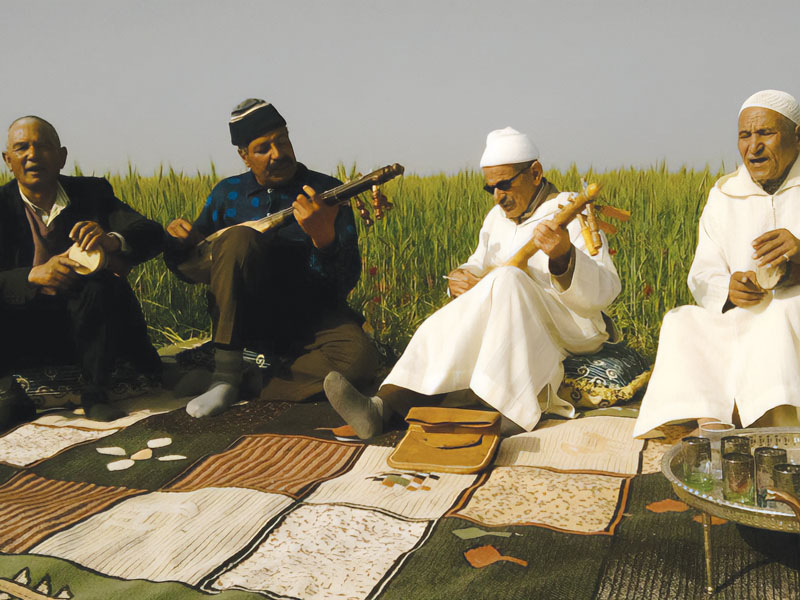Leadership in Moroccan Oral Poetry: The Example of Abdiyah Ayta
Issue 43

By Ahmad Ishtaiwi
In the Asifi region, ‘Abdiyah Ayta’ is an important element of folk culture in the Kingdom of Morocco. Researchers who study history, politics, literature, and sociology benefit from its rich cultural legacy, which includes information about the historical, cultural, traditional, artistic, and musical facets of Moroccan society.
Although it includes singing, performing and dancing, Ayta’s main pillar is historical oral poetry, a type of ancient folk poetry that can be considered the first Arab Moroccan poetry. It was brought to Morocco by Arab tribes who came from the East; these tribes added their contributions to the melting pot of authentic Berber musical rhythms.
Just as a chameleon changes colour in response to its surroundings, these forms of oral poetry were coloured by different periods of history in Morocco, so they reflect Moroccan society, culture and tradition.
Today, exploring the oral poetry of Ayta, especially the distinguished Abdiyah style of Asifi city and the Abda region, is an attempt to highlight the role that folk culture and elite written culture play in reflecting the nature of a community. Moreover, it is also to explore the ways in which culture offers insights into a community’s lifestyle and ways of thinking. Moreover, this heritage poetry contains gems that make it possible to answer historical and cultural questions that are still relevant today.
This study deals with a considerable portion of the Abdiyah Ayta art form and discovered that this kind of singing reveals a great deal about the tribal community and its oral traditions in Asifi and Morocco. It also focuses on the portrayal of leadership in the sung poetry of Abdiyah Ayta; this poetry makes reference to politics by alluding to some of the characteristics of the leader of Abda and its suburbs (characteristics that are not usually obvious).
To address the topic more broadly, the process started with a conceptual study which tackled the definition of Ayta as oral and sung poetry and traditional music. It was shown that Ayta is a Bedouin art form that Arab tribes brought to Morocco. This art form consists of sung poetry that describes village life and villagers’ ways of expressing themselves. These mostly anonymous texts were collectively composed at different times. The result is poetic texts that were combined using the ‘Hattat’ technique and sung to a rhythm provided by traditional instruments; the performance is inspired by the rural environment.
We identified Abdiyah Ayta as an example of heritage that can be found throughout Morocco. Influenced by the place in which it appears, it is known as ‘Al Mirsawi’ in Al Shawyah and Casablanca, ‘Al Huzi’ near Marrakesh, and ‘Al Hasbawi’ or ‘Al Abdi’ in Asifi.
Leadership connected the capital of Morocco – where the sultan lived – and the city’s outskirts, where the tribes lived. The method of governance, the leaders’ power, and their luxurious lifestyles had impacts on the tribe’s economy, social life, music, and singing styles. This is evident in Ayta's texts; Abdiyah Ayta in particular reflects the authority and power of the southern leaders, who were more dominant than other Moroccan leaders.
The last part of the study addressed leadership in the poetry of Abdiyah Ayta; this genre of poetry describes the leaders’ ways of governing and their lifestyles while depicting their tyranny and the suffering of the tribes.
In conclusion, the study recognised folk culture’s role in the poetry of Abdiyah Ayta and its expressive techniques, its role in disseminating information, and the ways in which it enhances aesthetic values and musical performance.


































































